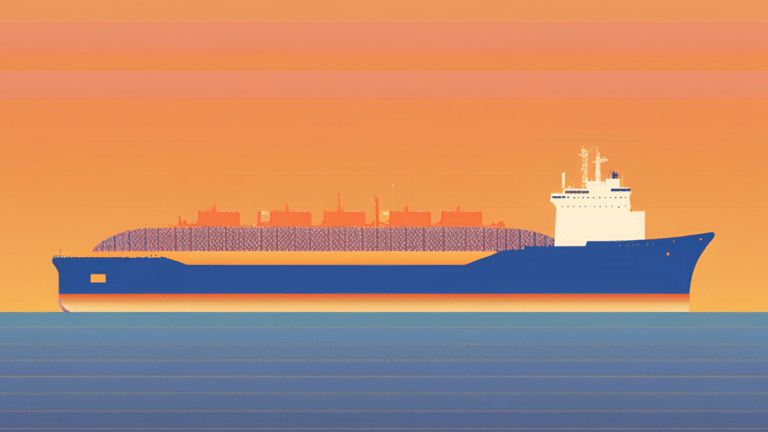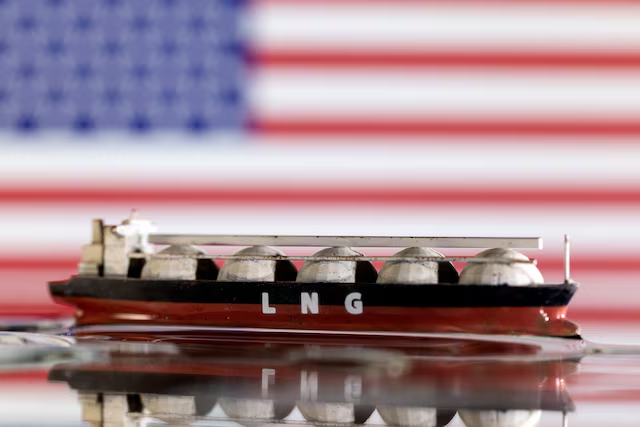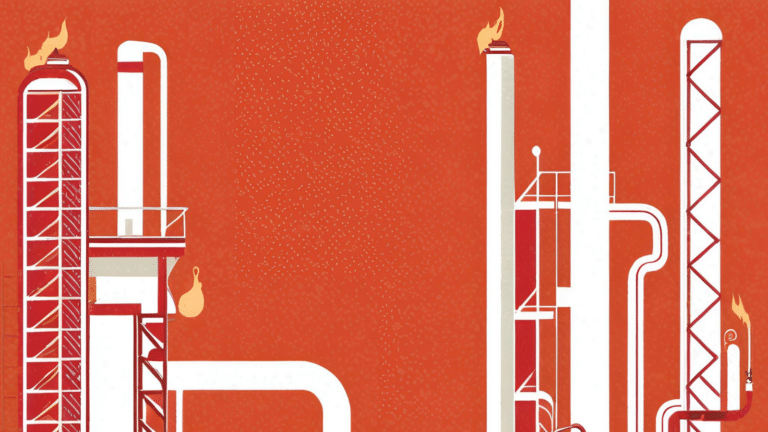Big banks predict catastrophic warming, with profit potential
Morgan Stanley, JPMorgan and an international banking group have quietly concluded that climate change will likely exceed the Paris Agreement's 2 degree
Current Access Level “I” – ID Only: CUID holders, alumni, and approved guests only
Q&A by Anne-Sophie Corbeau & Diego Rivera Rivota • September 27, 2022
Since Russia’s invasion of Ukraine, the dynamics of natural gas markets and, especially, Europe’s heavy dependence on Russian gas have received ample attention. Much less attention has been paid to Russian liquefied natural gas (LNG), despite Russia being the world’s fourth-largest exporter of LNG, supplying 40 billion cubic meters (bcm) to LNG markets in 2021.[1] In fact, thus far in 2022, around 78 percent of Russian LNG has gone to countries that have imposed some types of sanctions on Russia, but neither Russian gas exporters (Gazprom and Novatek) nor Russian gas and LNG, in general, have been sanctioned by Western allies.
In this piece, Anne-Sophie Corbeau, global research scholar with the Center on Global Energy Policy (CGEP) and Diego Rivera Rivota, research associate with CGEP, answer questions about the importance of Russia’s LNG trade flows and recent developments impacting them.
How Important Are Russian LNG Exports to Europe?
Europe imported around 140 bcm of pipeline gas from Russia in 2021.[2] Since April 2022, Russian gas pipeline flows to Europe have rapidly dropped, with imports to some countries being cut; as of mid-September, they stand at below 20 percent of the average daily volumes in 2021. In contrast, Russian LNG exports have increased by 12 percent in the first eight months of 2022. Russian LNG exports to Europe appear to be under the radar; not only have they not stopped flowing, but they have actually increased by 15 percent (to 13 bcm) over the same period in 2021.[3] In fact, with the exception of February and June, Russian LNG exports to Europe have increased, both compared to the previous months and on a year-on-year basis.[4] Since the Russian invasion of Ukraine, only Lithuania and the United Kingdom have completely halted Russian LNG imports.
Conversely, France has ramped up its Russian LNG imports, importing 5 bcm over the first eight months, surpassing Japan in February and March to become the largest importer of Russian LNG in those two months. In smaller amounts, Spain, Belgium, and the Netherlands have also increased their LNG imports from Russia, while Italy and Portugal, too, have occasionally imported Russian LNG this year.
Where Else Is Russian LNG Flowing?
Europe is far from being the sole destination of Russian LNG. In 2021, about 54 percent of Russian LNG made its way to Northeast Asia, historically the largest importer of this gas.[5] This includes China, Japan, South Korea, and Taiwan, all of which have long-term contracts with Russian LNG suppliers. China recently surpassed Japan as the world’s largest LNG importer. But Japan remains the largest importer of Russian LNG, which accounted for about 9 percent of Japan’s total gas supply in 2021.[6] China has increased its Russian LNG imports by 13 percent in 2022 compared to the first eight months of 2021, while Taiwan did so by 4 percent.[7] Even Indonesia, historically a net LNG exporter, started buying Russian LNG in March 2022 and has imported 0.4 bcm of Russian LNG since then.[8] South Korea’s Russian LNG imports, however, decreased 16 percent this year.[9]
Figure 1: Russian LNG exports by destination, 2021-2022
Can You Provide an Overview of the Russian LNG Industry and Its Traditional Trade Flows?
Russia has four operating liquefaction terminals: Sakhalin-2 LNG, Yamal LNG, Vysotsk LNG, and Portovaya LNG.[10] Sakhalin-2 LNG, located in the Pacific Ocean, is Russia’s first LNG export terminal and is operated by the majority state-owned enterprise Gazprom. Yamal LNG, Russia’s largest LNG plant located in Northwest Siberia, is majority owned by Novatek, often referred to as an “independent” company (not associated with Gazprom or vertically integrated oil companies), although some of its shareholders are close to the Kremlin, which can strongly influence its operations. The Yamal LNG terminal counts the French company TotalEnergies [11] among its shareholders. Novatek is also the owner of Vysotsk LNG, based in the Baltic Sea. Finally, Gazprom also owns Portovaya LNG, Russia’s newest terminal located in the Baltic Sea, which just shipped its first cargo.[12]
Sakhalin-2 LNG flows mainly go to Japan, South Korea, and Taiwan, the traditional Northeast Asian importers. Most of Sakhalin-2 LNG has been sold to these countries based on 14 long-term contracts, nine of which are with Japanese companies.[13] During the first eight months of 2022, despite the Russian invasion of Ukraine, exports from this LNG terminal increased with over 60 percent of total volumes exported to Japan, followed by 16 percent to South Korea, 14 percent to China, and 7 percent to Taiwan.[14]
Why Is Sakhalin-2 LNG So Important for Northeast Asian Importers?
First, these contracts are oil indexed, meaning that they are less exposed to the extremely high volatility of spot prices observed over the past year. LNG purchased at oil-indexed prices in Asia could be around three times less expensive than LNG bought at spot prices in 2022. Second, Japan, South Korea, and Taiwan have no domestic sources of natural gas or pipeline interconnections with neighbors. Their gas demand is driven by power generation, competing directly with other sources, particularly nuclear and coal. LNG and electricity demand have a marked seasonality, with demand rising in winter and, increasingly, also in summer, leading to price volatility.
Given very high LNG spot prices and tightness in the global market with Europe attracting increasing volumes of LNG, the assurance of LNG volumes seems to be welcomed by these three countries. While the Japanese government vehemently condemns Russia’s aggression against Ukraine and imposes several sanctions geared toward phasing out coal and oil imports from Russia, Japan has also quietly increased its purchases of Russian LNG.[15] In fact, no other country has imported more Russian LNG in 2022 than Japan.[16]
What Is the Biggest Change to the Russian LNG Industry following the Invasion of Ukraine? How Is It Affecting Importers?
For the first time, Russia appears to be tightening its grip on its LNG industry. Until recently Sakhalin-2 LNG was co-owned by Gazprom (majority owner), Dutch energy company Shell, and Japanese companies Mitsui and Mitsubishi. But on June 30, President Putin signed a decree to transfer rights to Sakhalin-2 LNG to a new Russian company, Sakhalinskaya Energiya. Gazprom is to retain the same majority ownership it held in the previous company. Requests by both Mitsubishi and Mitsui to transfer their stakes to the new operator were approved in August.[17] In contrast, Shell declined to take a stake in the new project operator. It will, however, still be able to receive LNG cargoes from the facility.[18] The Russian energy minister recently said he “expected Novatek to participate in Sakhalin-2,” and the company has confirmed its interest in assessing its participation in the project.[19]
All existing LNG contracts have to be transferred to the new entity operating Sakhalin-2 LNG. As of early September 2022, Gazprom had not asked its LNG importers to switch payments to rubles under the threat of cutting exports (as it has done with some European pipeline importers). It has, however, mentioned this possibility in the past,[20] a scenario that could be particularly challenging for Japan, given its reliance on Russian LNG.
How Are the Traditional Northeast Asian Importers, Especially Japan, Responding?
Japan, South Korea, and Taiwan seem to be taking a pragmatic approach and, so far, not “walked the talk” of condemning Russia’s invasion of Ukraine. For example, in a clear mismatch with the government rhetoric, Japanese companies JERA and Tokyo Gas have already signed contracts with Sakhalinskaya Energiya.[21]
The Russia-Japan bilateral relationship seems to be deteriorating, in light of Russian military drills off the coast of the Kuril Islands, a territory disputed by both nations.[22] In an extreme scenario in which Russia cuts off LNG flows to Japan, the country is likely to step up LNG purchases in the spot market, potentially further tightening the global LNG market.
What Are the Risks of Continued Dependency on Russian LNG for Importers?
Continued dependency on Russian LNG comes with the risk of energy supplies being used as a political tool of blackmail in the current geopolitical environment.[23] For now, Gazprom, Novatek, and the Kremlin seem to have scored a geopolitical win by keeping revenues from global LNG sales intact. Should relationships with importing countries further deteriorate, Russia could cancel their LNG contracts, forcing them to buy in the spot market, while reselling LNG to “friendly” countries and achieving political gain in LNG-thirsty developing countries.
Notes
[1] International Gas Union, “World LNG Report 2022,” https://www.igu.org/resources/world-lng-report-2022/.
[2] Anne-Sophie Corbeau, “Q&A | Europe’s Dependence on Russian Gas,” Center on Global Energy Policy, March 10, 2022, https://www.energypolicy.columbia.edu/research/interview/qa-europe-s-dependence-russian-gas.
[3] Bloomberg L.P. Terminal, accessed September 16, 2022.
[4] Ibid.
[5] GIIGNL (International Group of Liquefied Natural Gas Importers), “Annual Report 2022 Edition,” May 5, 2022, https://giignl.org/document/giignl-2022-annual-report/.
[6] Ibid.
[7] Bloomberg L.P. Terminal, accessed September 16, 2022.
[8] Ibid.
[9] Ibid.
[10] GIIGNL, “Annual Report 2022 Edition,” May 5, 2022, https://giignl.org/document/giignl-2022-annual-report/; Reuters, “Gazprom Says It Starts Loading LNG from New Portovaya Plant,” September 6, 2022, https://www.reuters.com/article/russia-economy-forum-gazprom/gazprom-says-it-starts-loading-lng-from-new-portovaya-plant-idUSL1N30D082.
[11] GIIGNL, “Annual Report 2022 Edition, May 5, 2022, ” https://giignl.org/document/giignl-2022-annual-report/.
[12] Energy Intelligence, “Gazprom: Portovaya Produces First LNG,” September 6, 2022, https://www.energyintel.com/00000183-13a1-dd1c-ad83-d3eb742e0000.
[13] Ibid.
[14] Bloomberg L.P. Terminal, accessed September 16, 2022.
[15] Prime Minister’s Office of Japan, “Japan Stands with Ukraine,” June 30, 2022, https://japan.kantei.go.jp/ongoingtopics/pdf/jp_stands_with_ukraine_eng.pdf.
[16] Bloomberg L.P. Terminal, accessed September 16, 2022.
[17] Reuters, “Russia Approves Mitsubishi for Stake in New Sakhalin-2 Operator,” August 31, 2022, https://www.reuters.com/business/energy/russia-approves-mitsubishi-stake-new-sakhalin-2-operator-2022-08-31/https://interfax.com/newsroom/top-stories/82699/.
[18] Bloomberg, “Shell Walks Away from Major Russian LNG Project with Nothing,” September 1, 2022, https://www.bloomberg.com/news/articles/2022-09-01/shell-walks-away-from-major-russian-lng-project-with-nothing?leadSource=uverify%20wall.
[19] RIA Novosti, “Минэнерго рассчитывает, что ‘Новатэк’ будет участвовать в ‘Сахалине-2,’”
(“Ministry Expects Novatek to Participate in the Sakhalin-2”), September 7, 2022, https://ria.ru/20220907/novatek-1815144281.html?chat_room_id=1815144281.
[20] Bloomberg, “Russian LNG Plant Could Seek Payment in Rubles if Sanctions Bite,” August 23, 2022, https://www.bloomberg.com/news/articles/2022-08-23/russian-lng-plant-could-seek-payment-in-rubles-if-sanctions-bite?leadSource=uverify%20wall.
[21] Reuters, “Tokyo Gas Signs Long-Term LNG Contract with New Sakhalin-2 Operator,” August 30, 2022, https://www.reuters.com/business/energy/tokyo-gas-signs-long-term-lng-contract-with-new-sakhalin-2-operator-2022-08-30/.
[22] The Asahi Shimbun, “Japan Protests to Russia over Military Exercises with China,” September 6, 2022, https://www.asahi.com/ajw/articles/14711776#:~:text=Japan%20has%20protested%20to%20Russia,coast%2C%20an%20official%20said%20Mondayhttps://www.interfax.ru/russia/860803.
Calls to "Drill, baby drill" are back with Donald Trump's return to the White House, and for US natural gas production, the catchphrase might also be a necessity...


Earlier this month, China convened its “two sessions”—the annual concurrent meetings of the National People’s Congress (NPC), China’s legislature, and the Chinese People’s Political Consultative Congress, a political...

Full report
Q&A by Anne-Sophie Corbeau & Diego Rivera Rivota • September 27, 2022